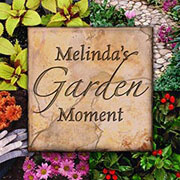
Melinda's Garden Moment Radio Tips

Melinda Myers
Nationally known gardening expert, TV/Radio host, author & columnist with over 30 years of horticulture experience and tons of gardening information to share! www.melindamyers.comMelinda's Garden Moment videos will help you create that beautiful landscape you’ve always wanted. Each week throughout the growing season, a new gardening video will be added right here, so be sure to stop back. You can also watch Melinda’s Garden Moments on your local network TV station affiliate.
When you think of holly you picture glossy pointed evergreen leaves and red berries. But there are more than 400 different hollies. Some are evergreen, others deciduous and many native to North America.
Mountain holly (Ilex mucronata) is deciduous, hardy in zones 4 to 6, and native to moist woodlands, swamps, marshes and bogs in the Northeast, Mid-Atlantic and Upper Midwest, as well as eastern Canada.
It tolerates sun, shade and wet soil, making it a great choice for rain gardens or other wet and low-lying areas in the landscape.
Possumhaw (Ilex decidua) is another deciduous holly that is native to Maryland, Virginia and south to Florida, west to Texas and into Mexico. It’s hardy in zones 5 to 9 and more tolerant of alkaline soils than most hollies. The dull green leaves turn purplish yellow in fall, revealing orange to scarlet berries that persist through winter.
A bit more information: Winterberry (Ilex verticillata), also known as Michigan holly, is another North American native holly. All of these hollies need at least one male plant for every five female plants for pollination to occur and red berries to develop.